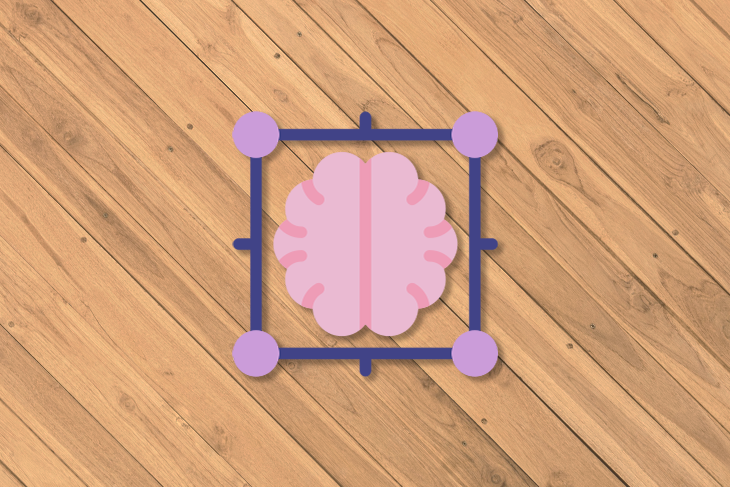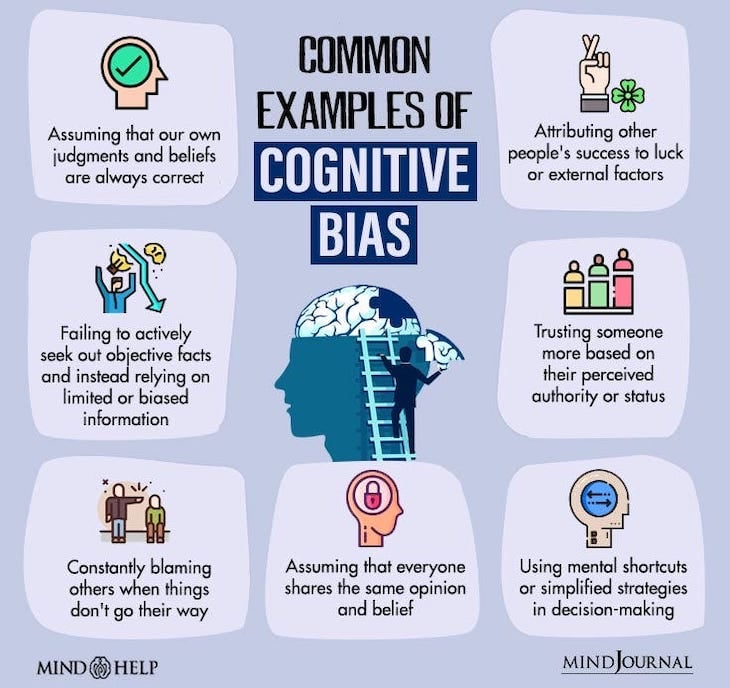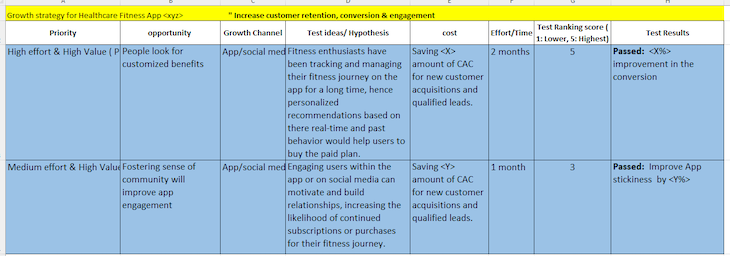Cognitive biases play a significant role in consumer product adoption. For one, product leaders and managers tend to rely on certain beliefs and assumptions when developing products. Cognitive biases also impact consumer behavior, highlighting the importance of ethically addressing these biases to prevent customer churn and buyer’s remorse.

We’ve all spent a lot of time scrolling through Netflix or other on-demand (OTT) platforms only to repeatedly watch the same shows or genres. This behavior can provide valuable insights into how users consume content and allow providers to engage with customers ethically by leveraging this cognitive and behavioral information.
One way to achieve this is through ratings and personalization based on users’ actions and behaviors. The success of popular platforms such as Hot Star, Netflix, and Amazon Marketplace can be attributed to their effective use of ratings and recommendation features, which have made them profitable, scalable, and widely used.
Cognitive biases are patterns of deviation from rationality in decision-making. These biases can affect how people perceive information, process it, and make decisions. They are often the result of mental shortcuts our brains use to simplify complex information processing, but they can lead to errors and irrational decision-making.

Understanding cognitive biases is crucial for PMs when designing strategies for product adoption because these biases can significantly influence how users perceive and interact with a product.
Take landing pages, for example. It’s important not to put too much information on a landing page so as to minimize the cognitive load. Things like typography come into play here to ensure the user has a great experience and can easily digest all the information you want to present to them.
Another example is the temptation to build too many features, which can make the onboarding process too complex for users.
Product managers can overcome these and other cognitive biases by endeavoring to understand the jobs to be done of new users and tailoring the experience to meet their needs. Understanding these biases helps PMs define strategies to take steps to reduce their effects.
The sunk cost fallacy is a psychological phenomenon that can make you feel compelled to keep investing in a situation, even if it’s not rational, because you’ve already put so much effort, time, and money into it. This feeling of having already “sunk” resources can make it hard to let go of the situation, as you don’t want to feel like you’ve wasted what you’ve already put in.
Product managers can exploit this line of thinking to influence consumers to maintain their subscriptions despite diminishing ROI.* *
Let’s look at a couple of examples:
Many Instagram users, who are not influencers or marketers, use the paid features of the app to boost their stories, reels, and posts to get more likes and followers. They become addicted to the positive results and end up spending money on social recognition.
The product team at Instagram takes advantage of this cognitive behavior and mindset to encourage users to get more social recognition. Even if users don’t have a monetizing purpose, they still pay for boost features, knowing there are no real benefits. This is all made possible by the product team’s ability to align Instagram’s features with the user’s behavioral tendencies.
LinkedIn offers a monthly premium trial, which provides features for job seekers, marketers, and working professionals. These trials offer several benefits, including profile views, access to top job applicants, and HR connections. These benefits are compelling enough to convert non-premium LinkedIn users into premium customers once they use a month’s trial. Even if users may not experience all the benefits during the trial period and have only heard of them from others, most users end up buying the subscriptions because they have invested time, effort, and interest in specific premium features and want to join the bandwagon of premium users.
I used the sunk cost fallacy in a growth hacking strategy for a health app that enables users to track their fitness journey. The hypothesis was that users had already invested significant time, money, and effort into development their fitness lifestyle and were therefore likely to continue their subscriptions:

In this case, the idea of the sunk cost fallacy guided the product adoption strategy. The test results were satisfactory and showed growth based on the following KPIs:
As humans, we tend to focus more on information that supports our existing beliefs, which is confirmation bias. Although it helps our brain process the constant flow of data, it’s essential to recognize and prevent this bias from distorting our judgment.
I have learned the significance of combating confirmation bias by adopting a hypothesis-driven approach and testing assumptions. We should refrain from letting our egos and assumptions affect objective decision-making. To achieve this, playing devil’s advocate and emphasizing data contradicting our hypothesis can be beneficial.
In ecommerce, it’s common to experience poor conversion and high card abandonment rates despite high traffic. An example is when a PM validates the app for a seamless checkout experience. The UX lead might anticipate issues due to, say, a small checkout button. This might lead them to conduct usability tests and create questions to ask the participants.
The hypothesis for usability testing might look something like this:
When conducting a usability test, it’s important to avoid confirmation bias by considering all the facts and not just sticking to prior beliefs. The statement above shows a bias toward preconceived notions. One problem is that the PM initiates the creation of a hypothesis around the checkout button, which can limit the beliefs of the test participant and prevent the PM from exploring other issues. Additionally, close-ended questions can further narrow the focus on the checkout button.
A better way of doing this usability test would be to ask open-ended questions, such as:
Gathering participant feedback regarding the questions mentioned above can prove helpful for both the UX lead and PM. This feedback can assist in forming the appropriate hypotheses to test before making any changes.
Many instances occur in the daily work of UX leads and PMs as they develop products. Giving participants open-ended prompts and questions is advisable to prevent limiting or affecting their cognitive abilities.
Anchoring bias is a cognitive bias where people rely on the initial information they receive about something. When making decisions, individuals often focus on any new information about their original reference point rather than evaluating it independently. This can result in biased judgments and make it challenging to adjust plans or predictions accordingly.
Marketing often uses anchoring bias during sales when products are priced lower than their actual MRP*. *This bias can cause customers to believe they are saving money and that the product is essentially free, even if the discounted price is beyond their budget. However, the product may not necessarily be worth the discounted price, but the anchoring bias often prompts customers to purchase. This strategy is commonly used in offline stores and online ecommerce and can be effective in both contexts.
Another common example of anchoring bias in the subscription model is when positive experiences are introduced at the start of the customer journey or onboarding. As a PM, offering a freemium version for a few days is often advised to influence customers and encourage them to subscribe or join loyalty programs once the trial period ends.
Customers base their decisions on the initial benefits they receive. This strategy is an important aspect of product-led growth and is commonly used as a lead-generation technique in leading products.
The availability heuristic is a cognitive bias in which individuals rely on easily accessible and memorable information to make judgments, often disregarding more reliable data. This can result in errors in decision-making.
As an ecommerce lead, I suggest using the availability heuristic_ _concept to increase product adoption and conversion rates. One effective method is to promote direct-to-consumer (D2C) advertisements on popular ecommerce marketplaces. By using bold fonts, bright images, the right model, a catchy slogan, and strategic product placement, customers become excited when they see these ads on social media feeds such as Instagram, TikTok, and Pinterest. These platforms are ideal for social commerce and allow businesses and influencers to create engaging eye-catching, memorable ads.
During the onset of online commerce a few years back, ecommerce firms leveraged the availability heuristic by prominently displaying other services, like loyalty programs, alongside product listings. When users see this service alongside their shopping experience, they are more likely to try it out because it is readily integrated into their shopping process. This availability heuristic pushes customers to buy impulsively.
A product manager’s perception of the world can be clouded by cognitive biases, such as confirmation bias, that act as filters through which we view and interpret information given by customers and stakeholders. PMs must be mindful of these biases, which can be unintentionally overlooked, and strive to gather feedback from all users, regardless of how they are labeled.
By recognizing and overcoming our biases, we can better serve our customers and create products that meet their needs. We should strive for objectivity and fairness in our decision-making processes, and always remember to listen to all feedback with an open mind.
Here are some ways that PMs can counteract their cognitive biases (we’ll use confirmation bias as an example):
As logical beings, we must recognize that our imperfections and biases can obscure our perception and interpretation of information. Biases play a bigger role in the field of product development. It is essential to not only be aware of our own biases but also those of our product teams such as UX and engineering. We can overcome our biases and create a more efficient, equitable, and bias-free product with mindfulness and awareness.
Featured image source: IconScout

LogRocket identifies friction points in the user experience so you can make informed decisions about product and design changes that must happen to hit your goals.
With LogRocket, you can understand the scope of the issues affecting your product and prioritize the changes that need to be made. LogRocket simplifies workflows by allowing Engineering, Product, UX, and Design teams to work from the same data as you, eliminating any confusion about what needs to be done.
Get your teams on the same page — try LogRocket today.

A practical five minute revenue estimation method to help product managers compare ideas, drop low impact features, and prioritize smarter.

A practical guide for PMs who want to stop being bottlenecks, delegate smarter, and lead teams effectively with a clear ownership framework.

Stop letting unreliable data block features. Treat data as inventory to track quality, ownership, and ship with confidence.

Learn why slide decks slow teams down and explore better tools like whiteboards, PRDs, and prototypes to improve collaboration and alignment.